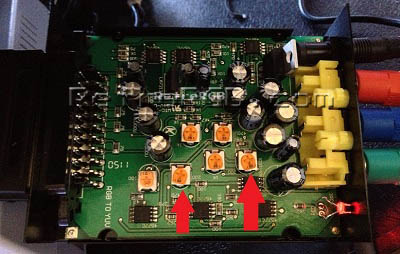Converters
There are many different reasons you’d want to convert a signal and this page will slowly grow to discuss all of them. To start, I’d like to make the clarification that in this context, converters just change the signal type; There’s no scaling or processing of the image. This should always result in a zero-lag solution, with video quality varying.

RGB to Component Video (YPbPr)
There are a few scenarios where converting RGB to component would be the right choice for your particular setup. If you’re using a consumer-grade CRT that only has component inputs, these are the best choice. They might even work well on your flat-screen TV, depending on compatibility. For more info, please check out my upscaler comparison page, as it describes in detail the difference between using RGB to component, vs an upscaler.
RetroTINK RGB2Comp:
The “RetroTINK” line of products includes a transcoder that converts between RGB and component. These should preserve the signal quality, while allowing an easy way to convert the signals.
US Seller: https://retrorgb.link/rgb2comp / UK Seller: https://retrorgb.link/rgb2compuk
Shinybow SB-2840 This is a great converter, but the recent release of the much cheaper RetroTINK products has bumped it to second in line. It was tested and verified on an oscilloscope and it works with 240p, 480i and 480p.
CSY-2100 & Clones I tested both a CSY-2100 SCART to Y-U-V converter and a clone system (the clones look similar to the one in the upper left picture, but have the screws on the sides, not front. The original CSY-2100 seemed to work well, however they’re expensive and hard to find.
I didn’t have as good results with the clone’s though; I had to tweak the tuning POT’s before it looked right, which should never be necessary with analog video. Here’s the POT’s I tweaked, but YouTube user Billkwando also has a good video about it:

As an FYI, if you’re using a 240p console on a basic, consumer-grade CRT, you won’t see a big difference between RGB (or component) and S-Video…and it’s certainly not as drastic a difference as seen on high-end displays. If both your CRT and console support S-Video, that might be a cheaper solution when available.
Analog to HDMI
Any device that converts from analog (VGA, Component, Etc) to HDMI with no scaling should be a lag-free device. Video quality may vary, but as long as lag isn’t added, it shouldn’t harm the overall gaming experience. WARNING: Makers of cheap generic devices often sell inconsistent products. The ones I’ve found that work well use a “Lontium” chip and even work with 240p. I keep a list of the equipment I use on my Amazon affiliate store, but keep in mind that there’s no way to guarantee you’ll get one with the same chip inside: https://www.amazon.com/shop/retrorgb?listId=IP72N6BL06SV
The “RetroTINK” line of products includes a transcoder that converts between YPbPr Component video and RGB SCART. This will work in all resolutions from 240p – 1080i.
Please head to the Display RGB page for more info on how to get an RGB signal on your display. If you’re here as part of the RGB Guide, please either move onto the next section: upscalers, or move along to getting your SCART RGB cable into your display.